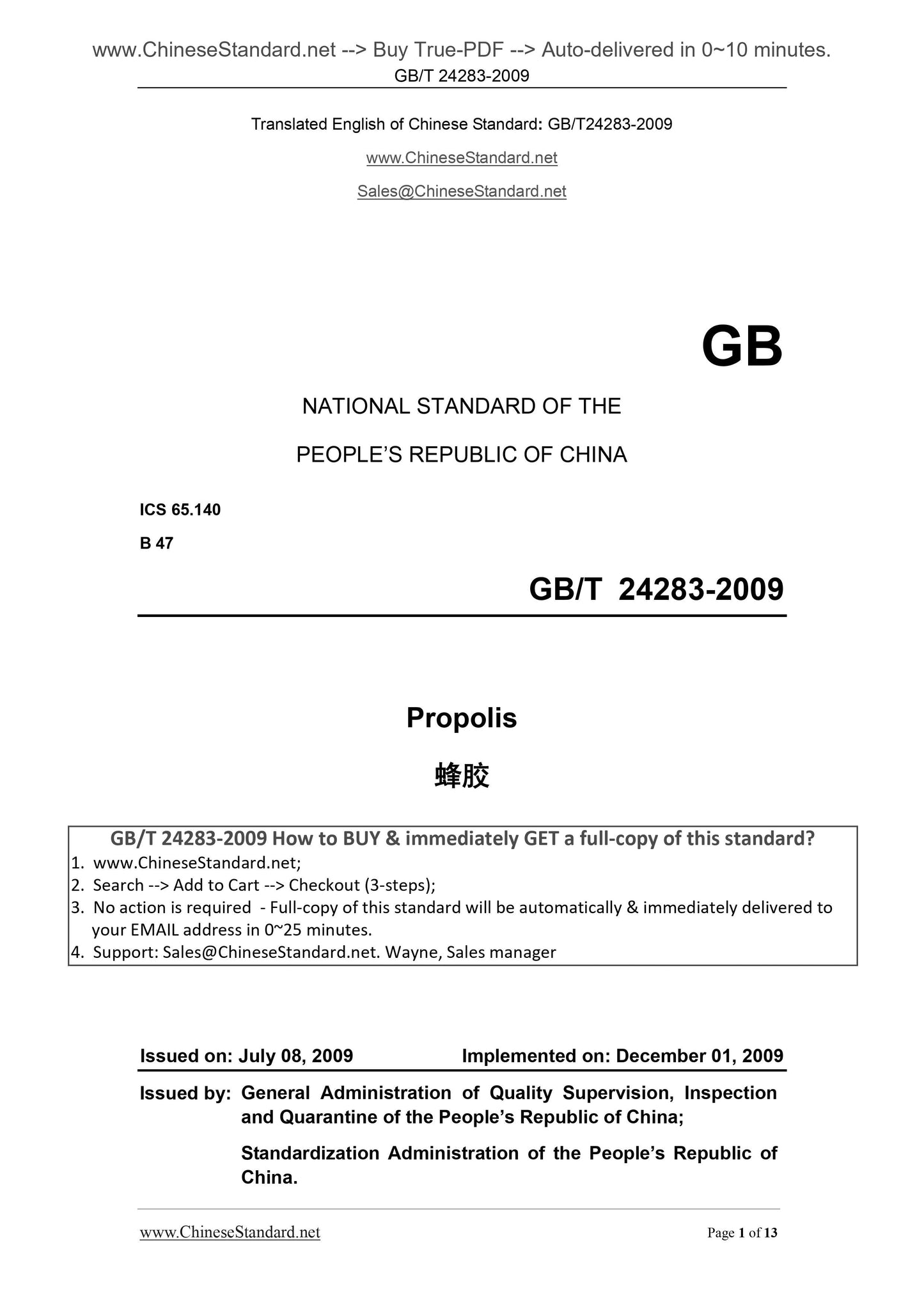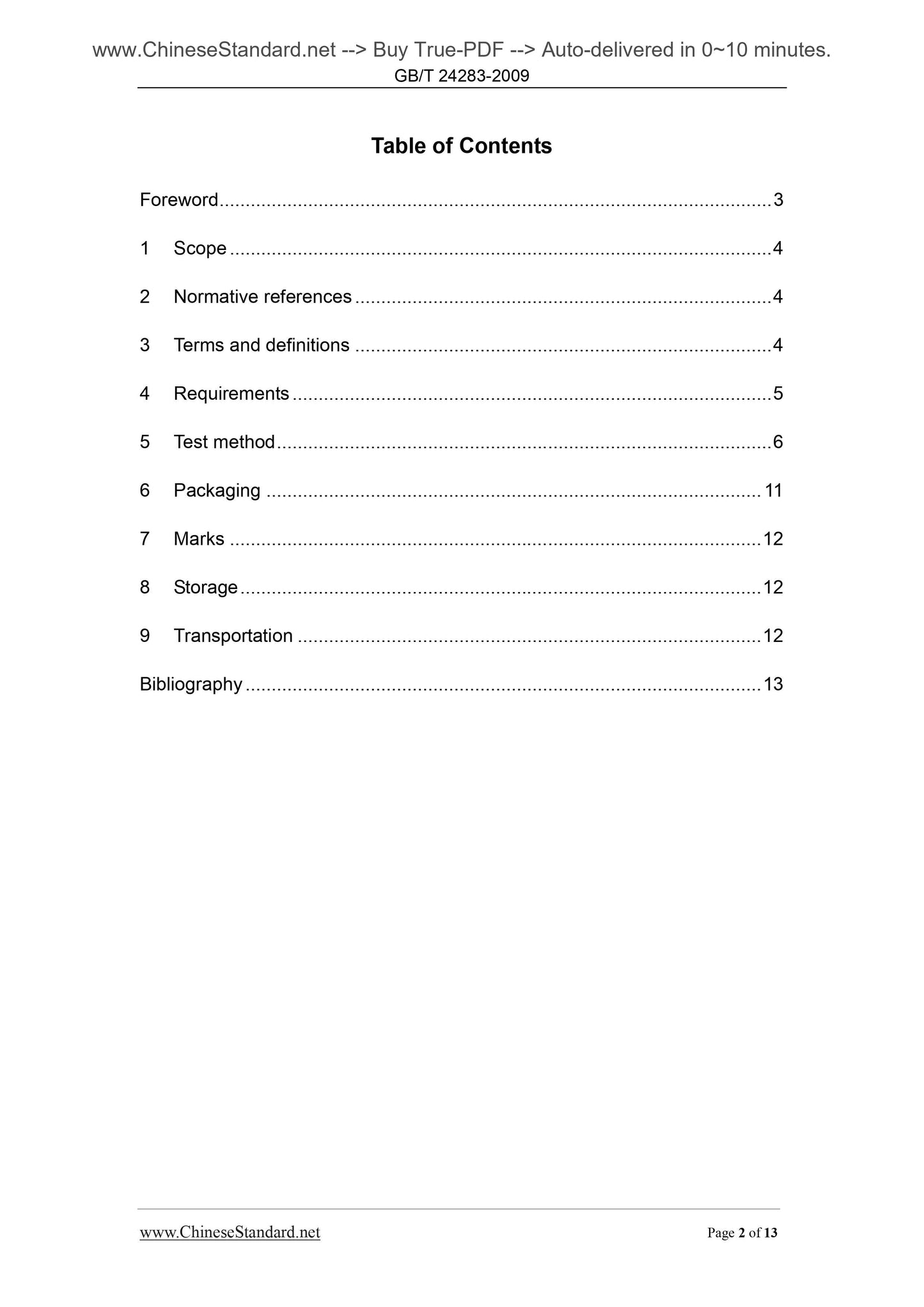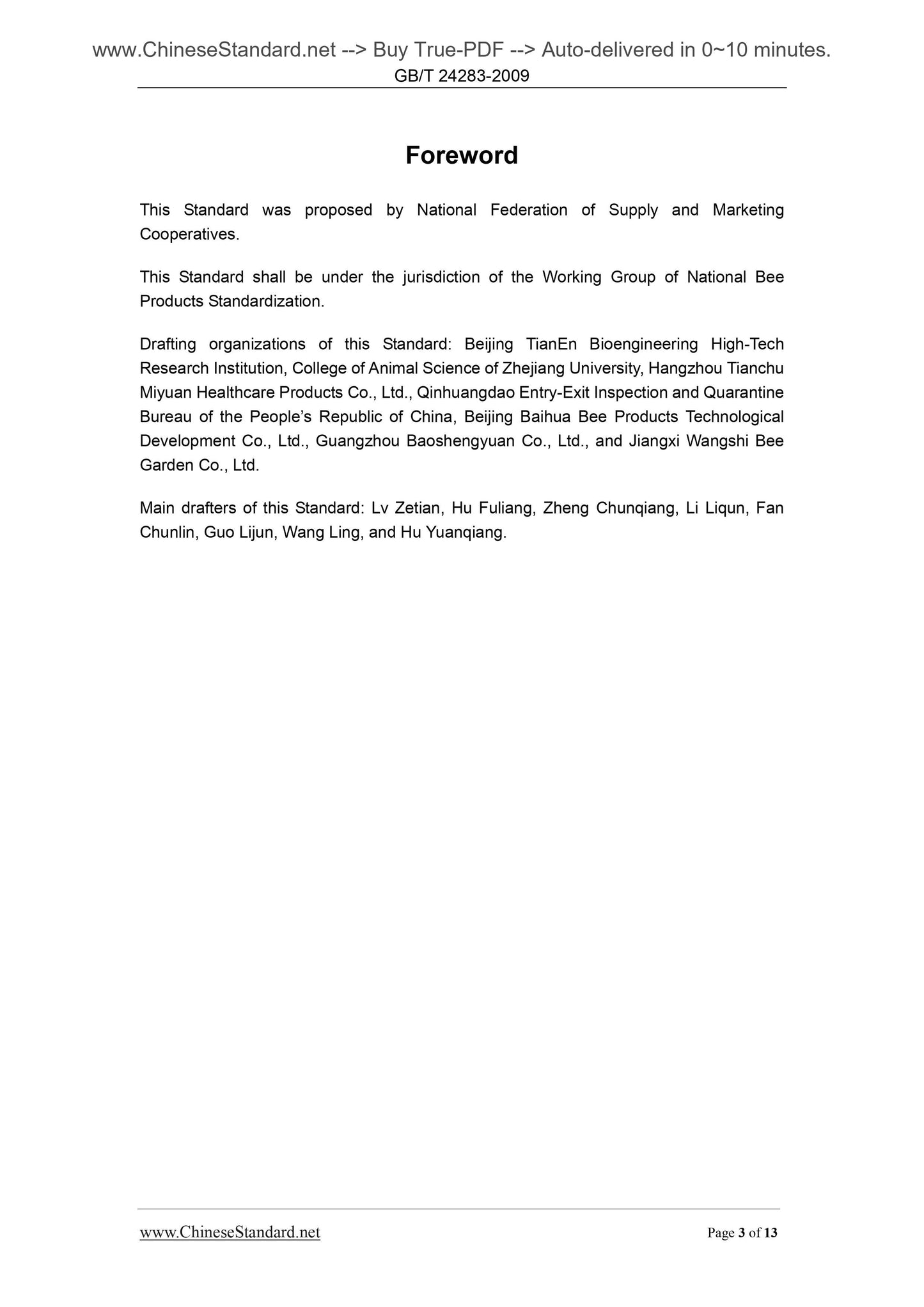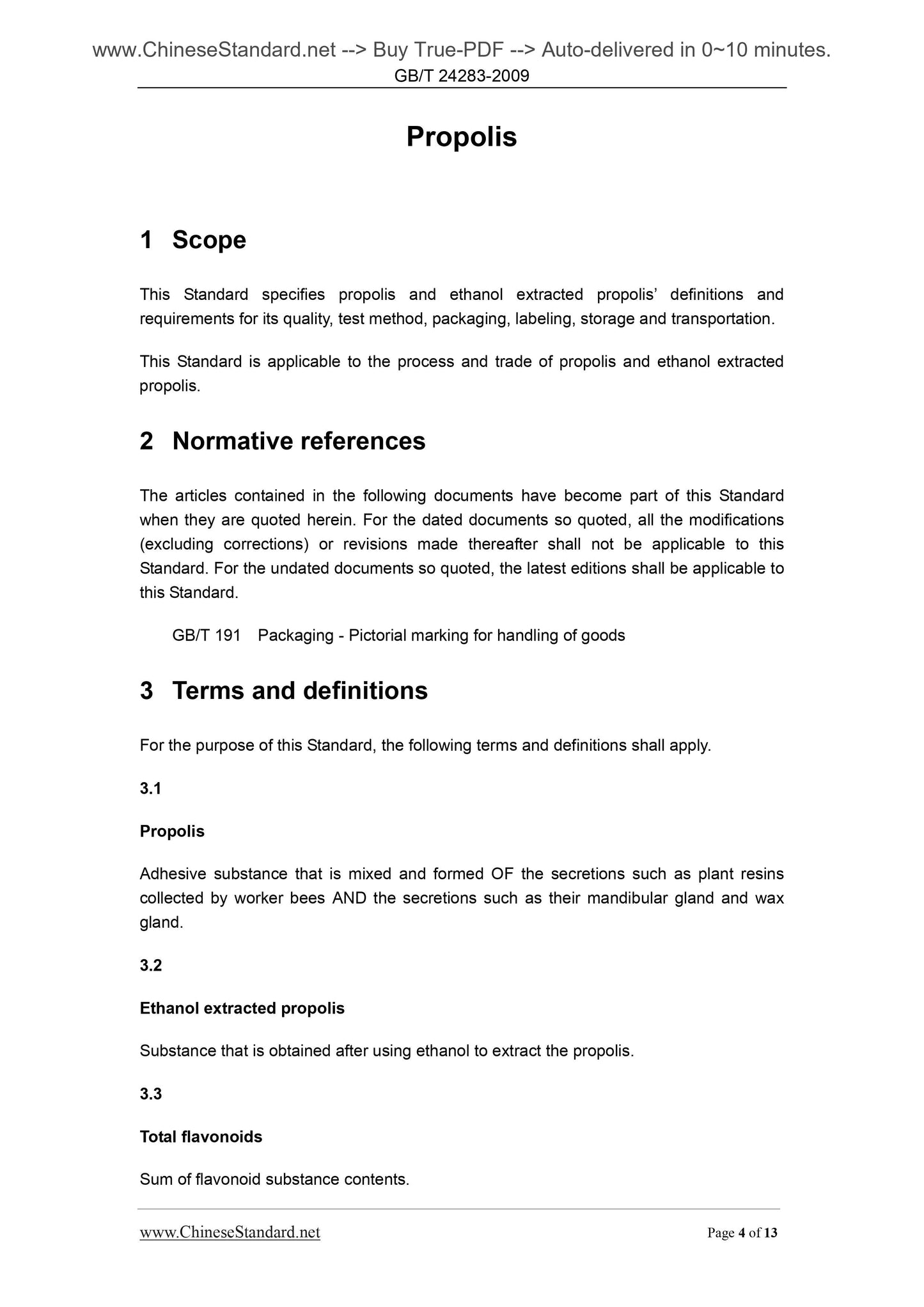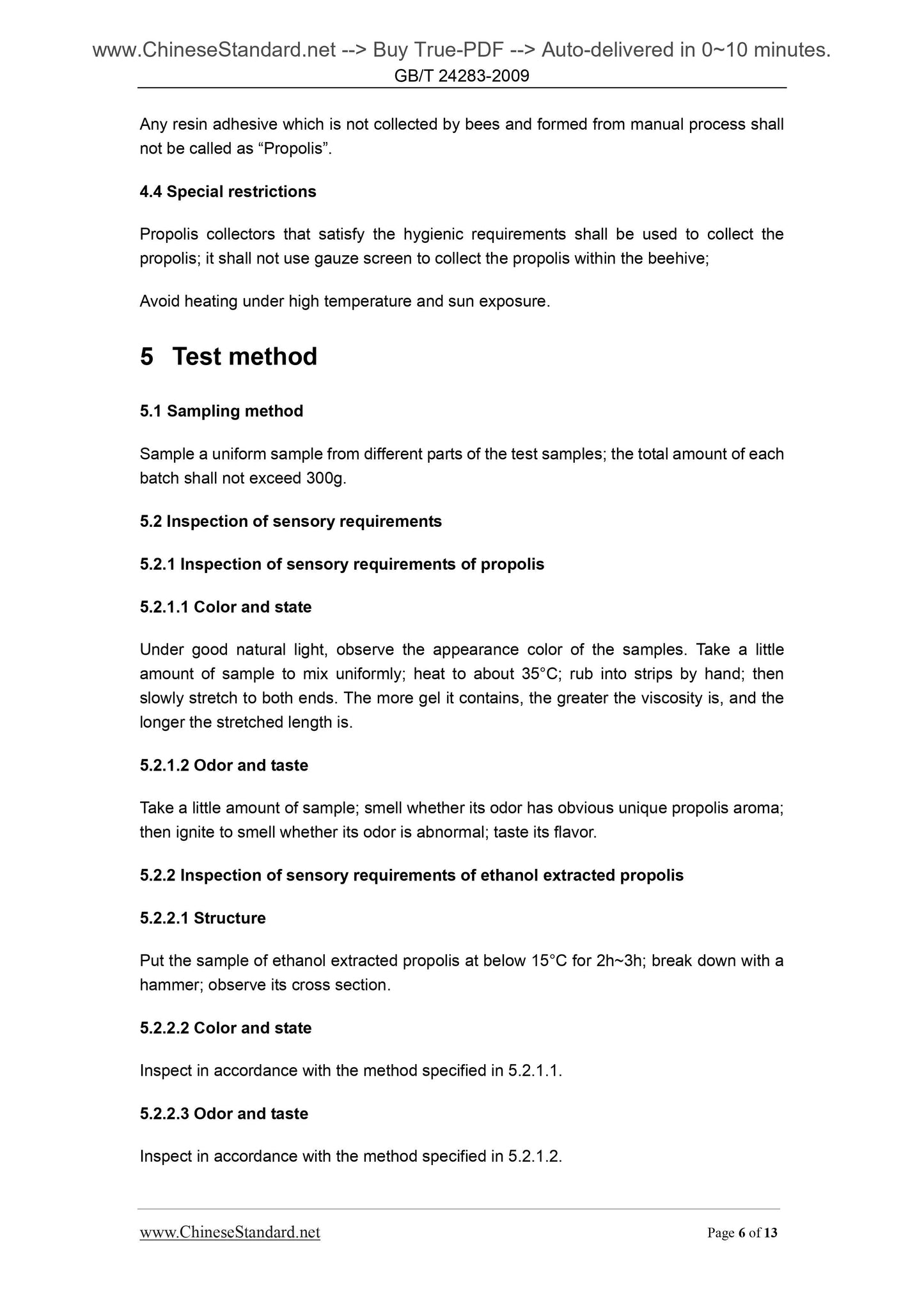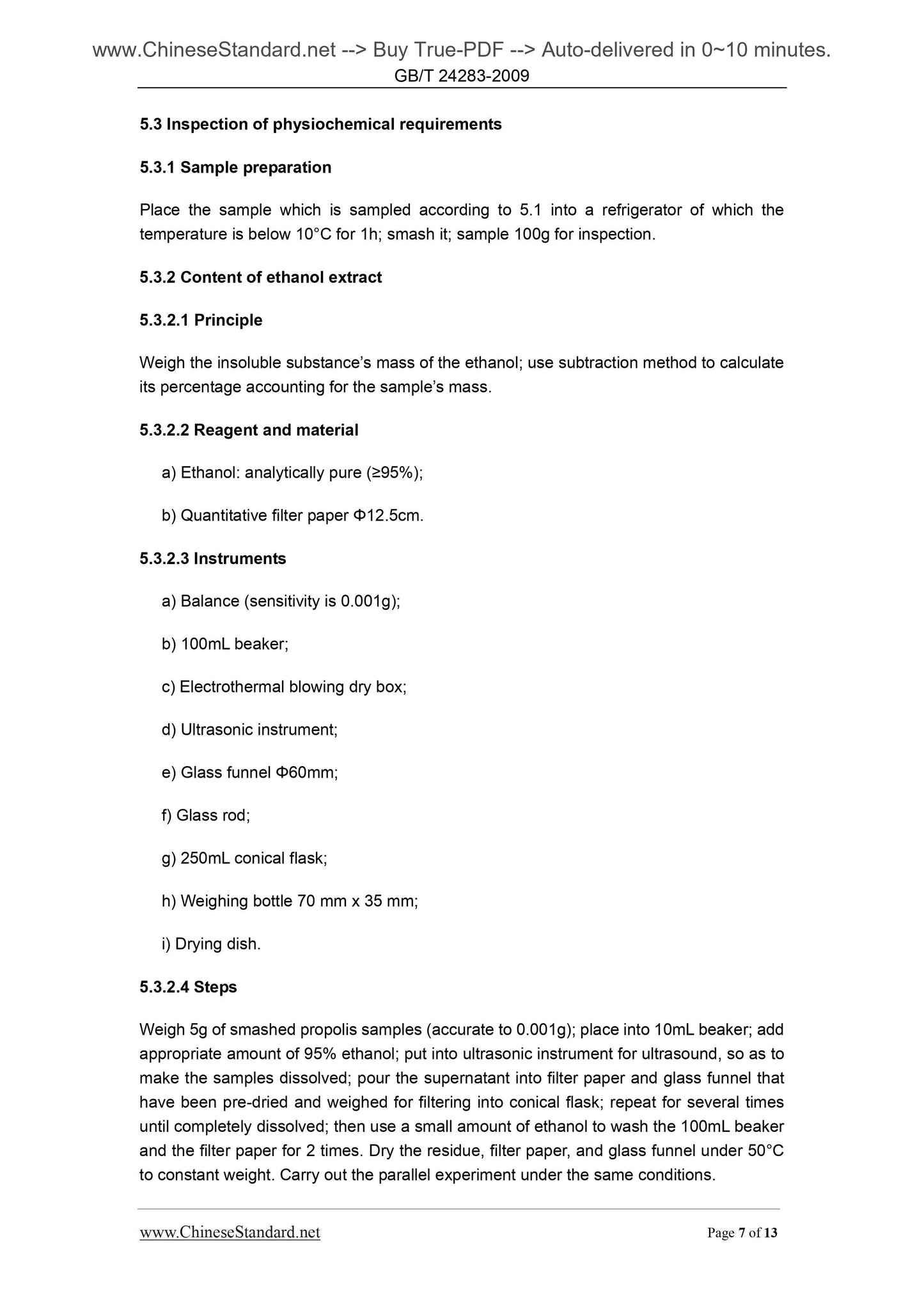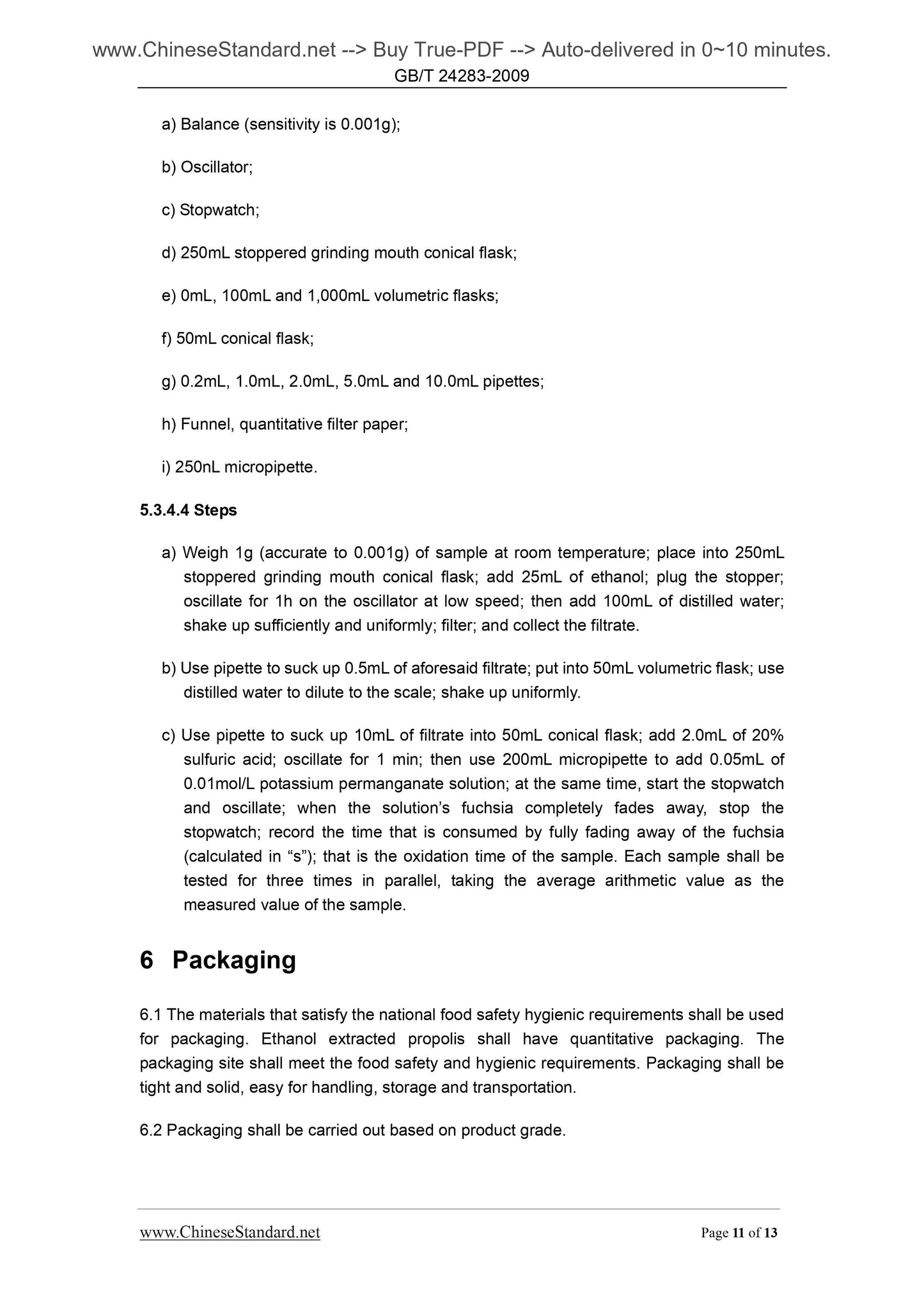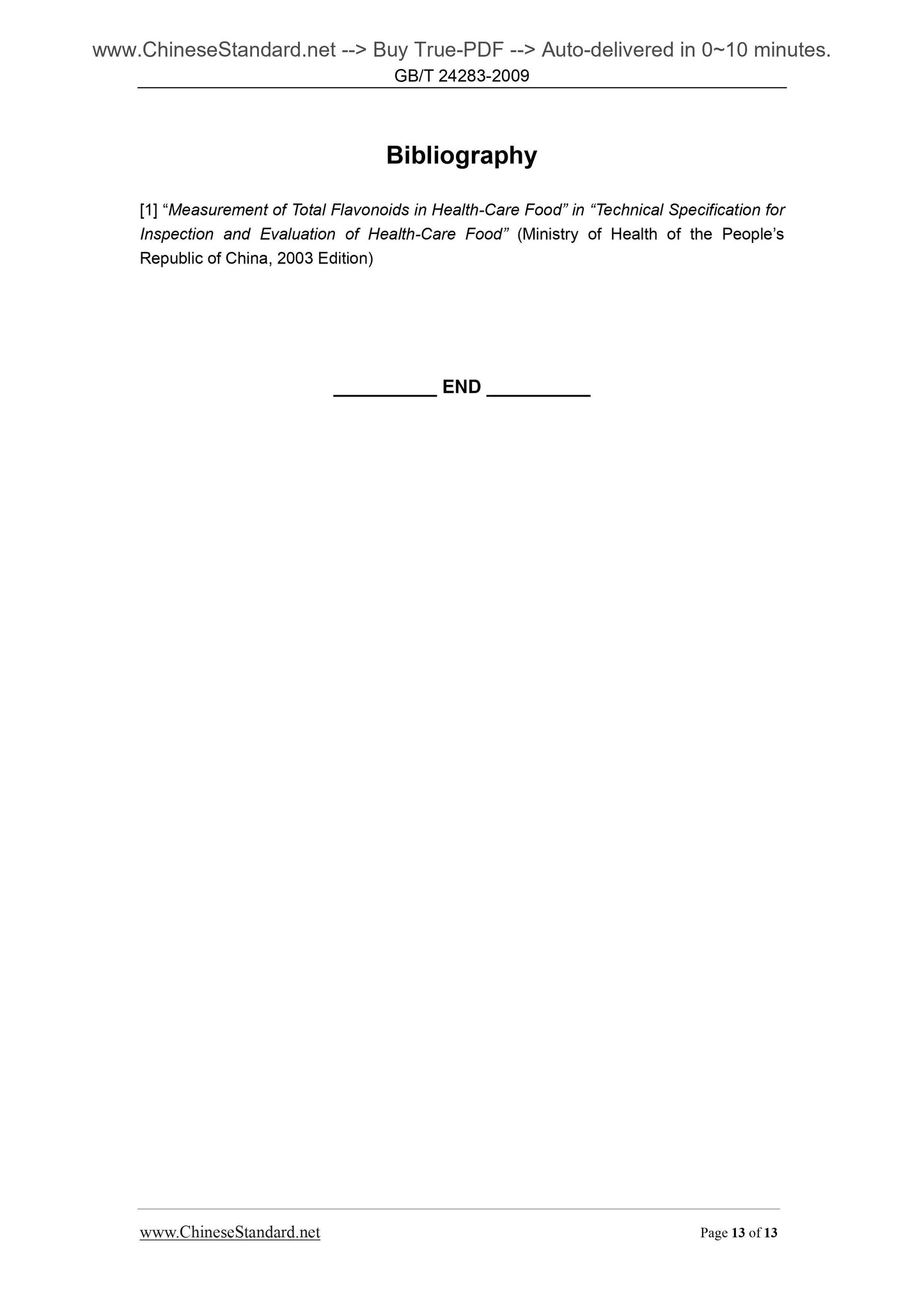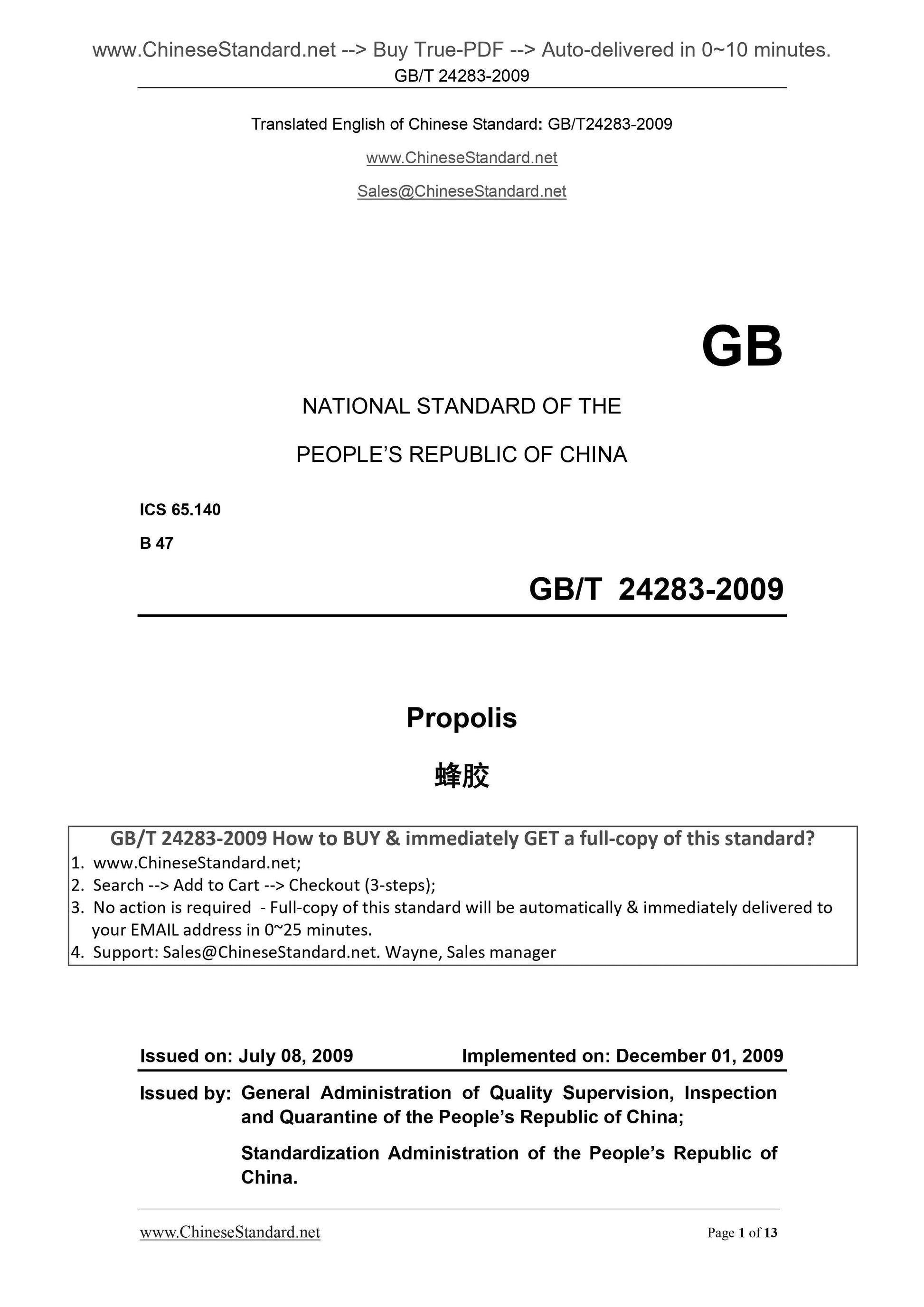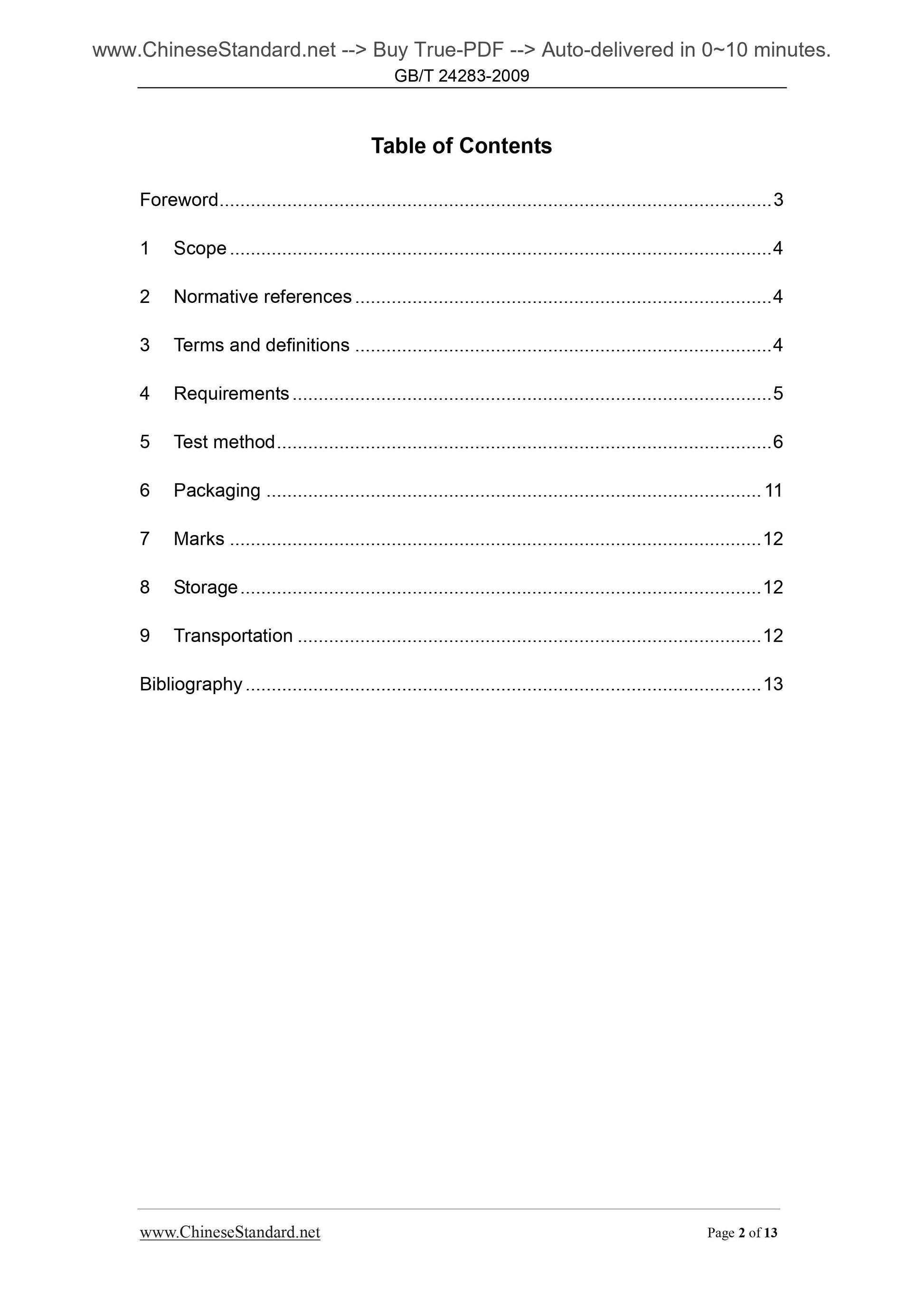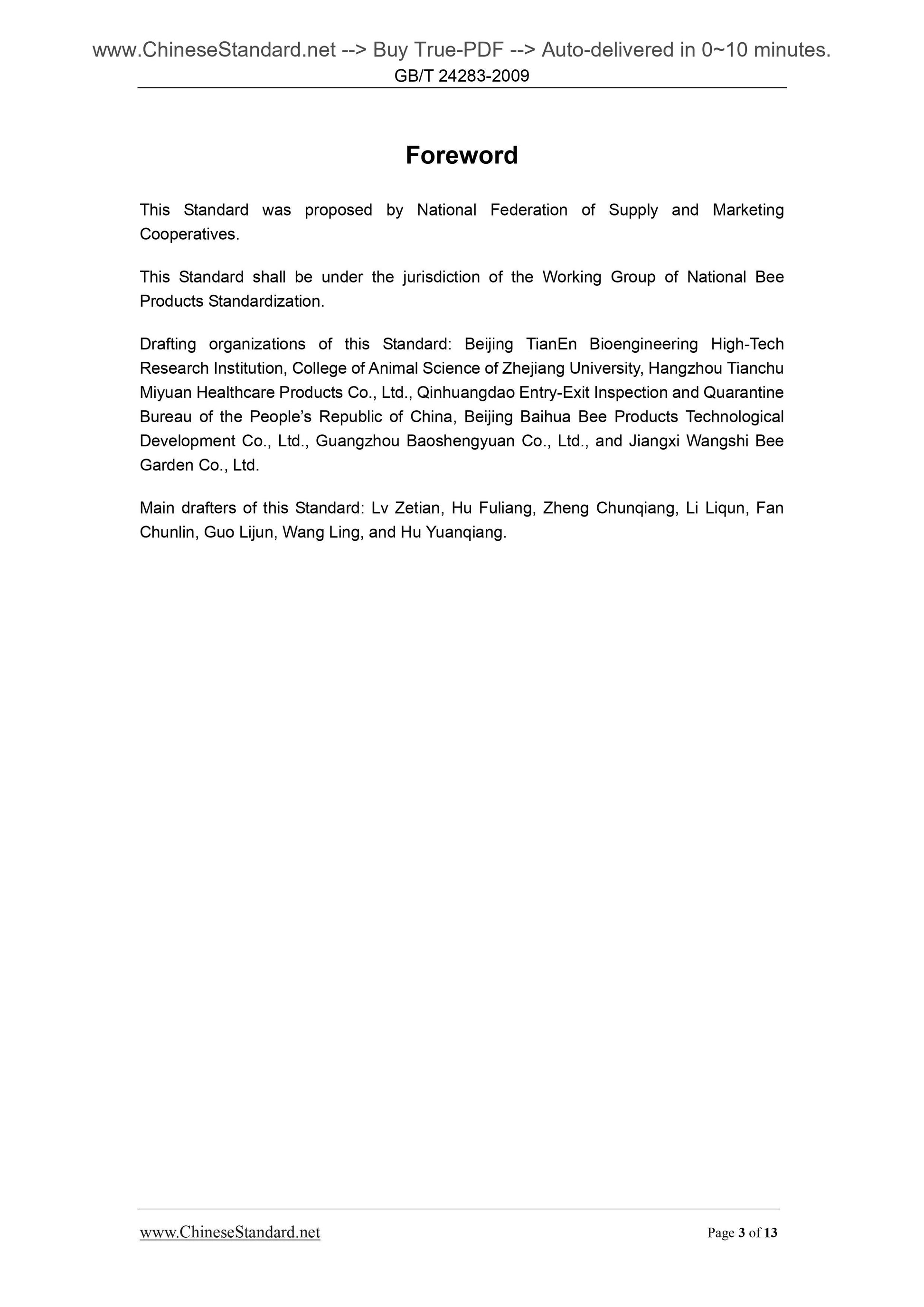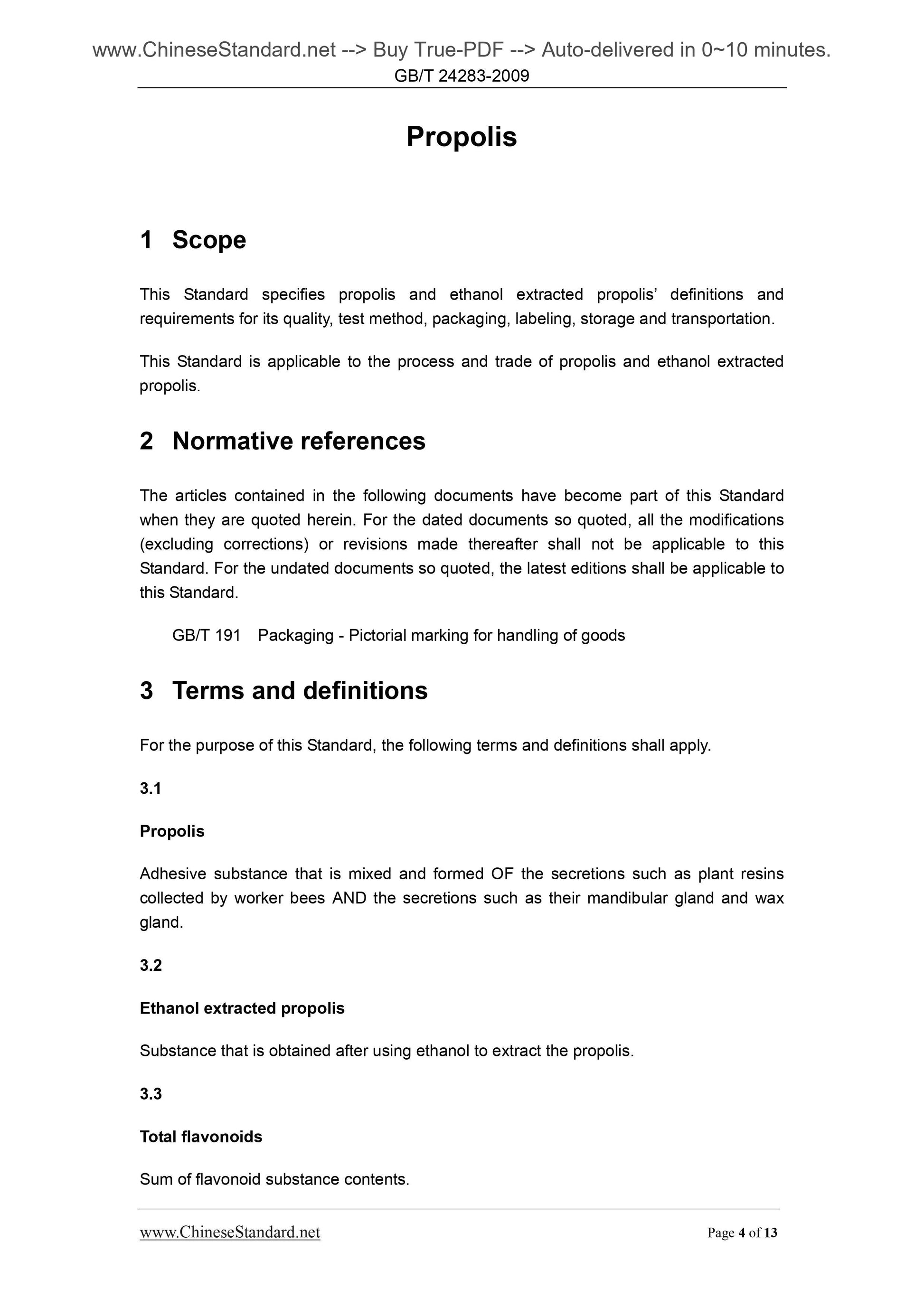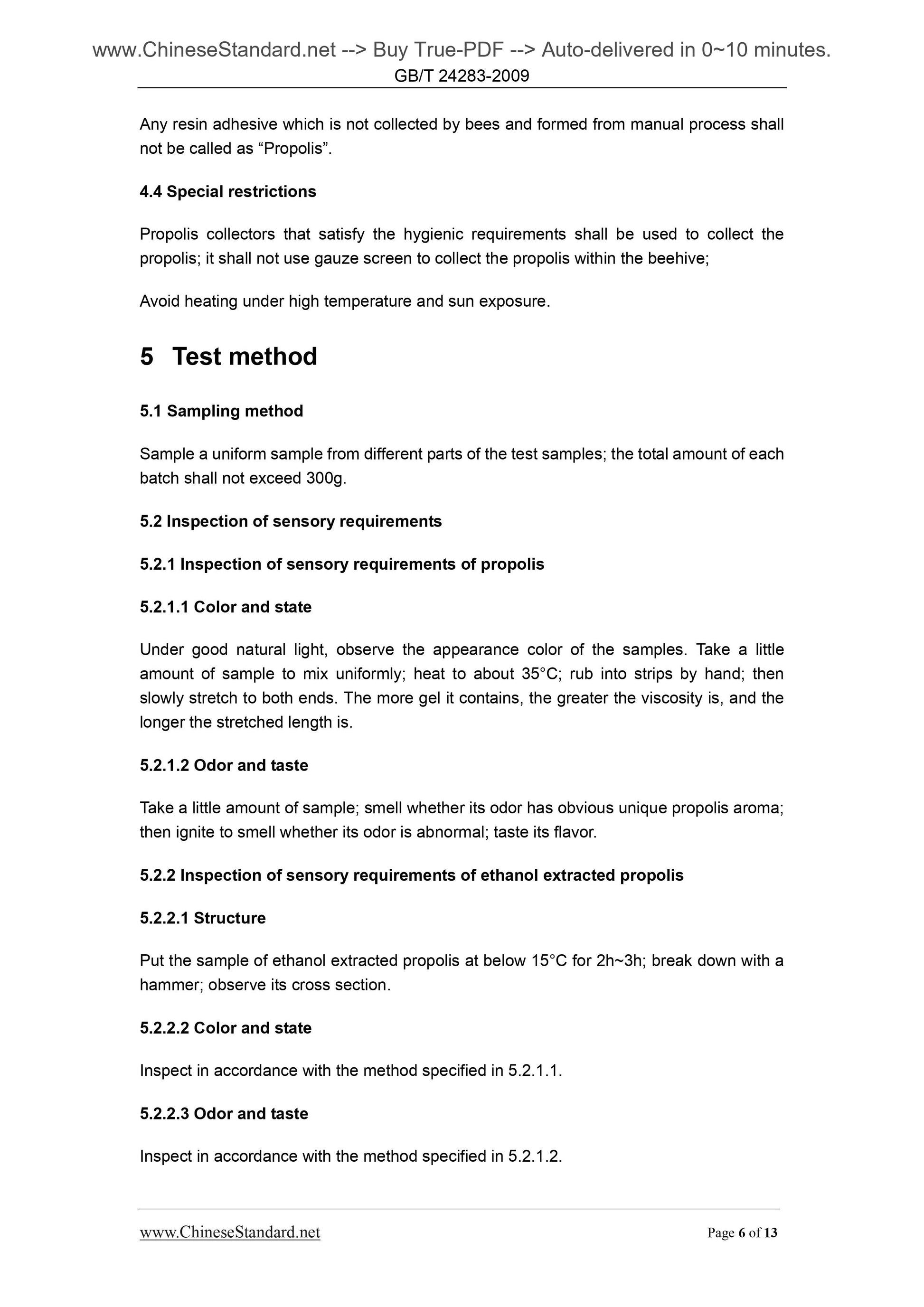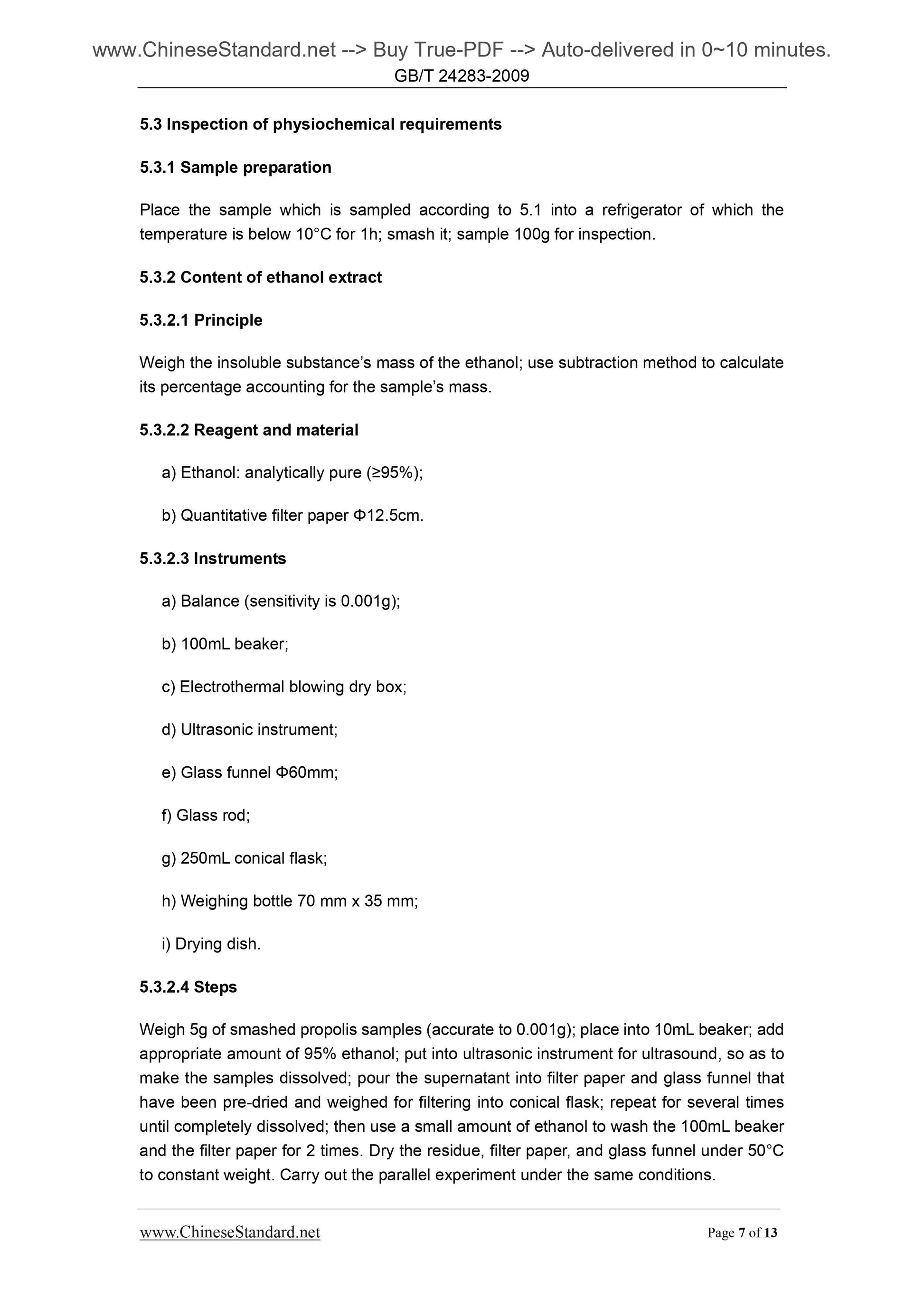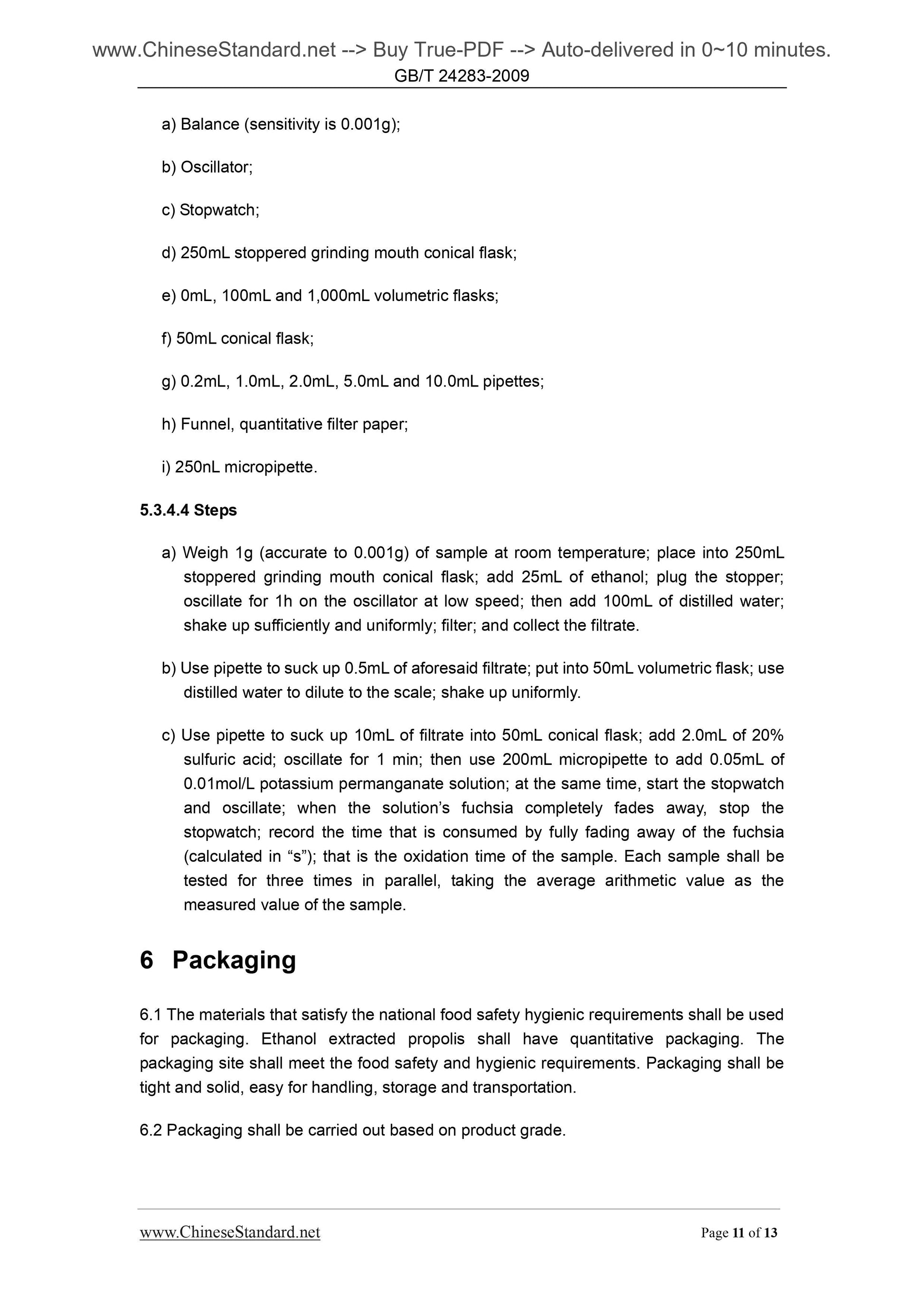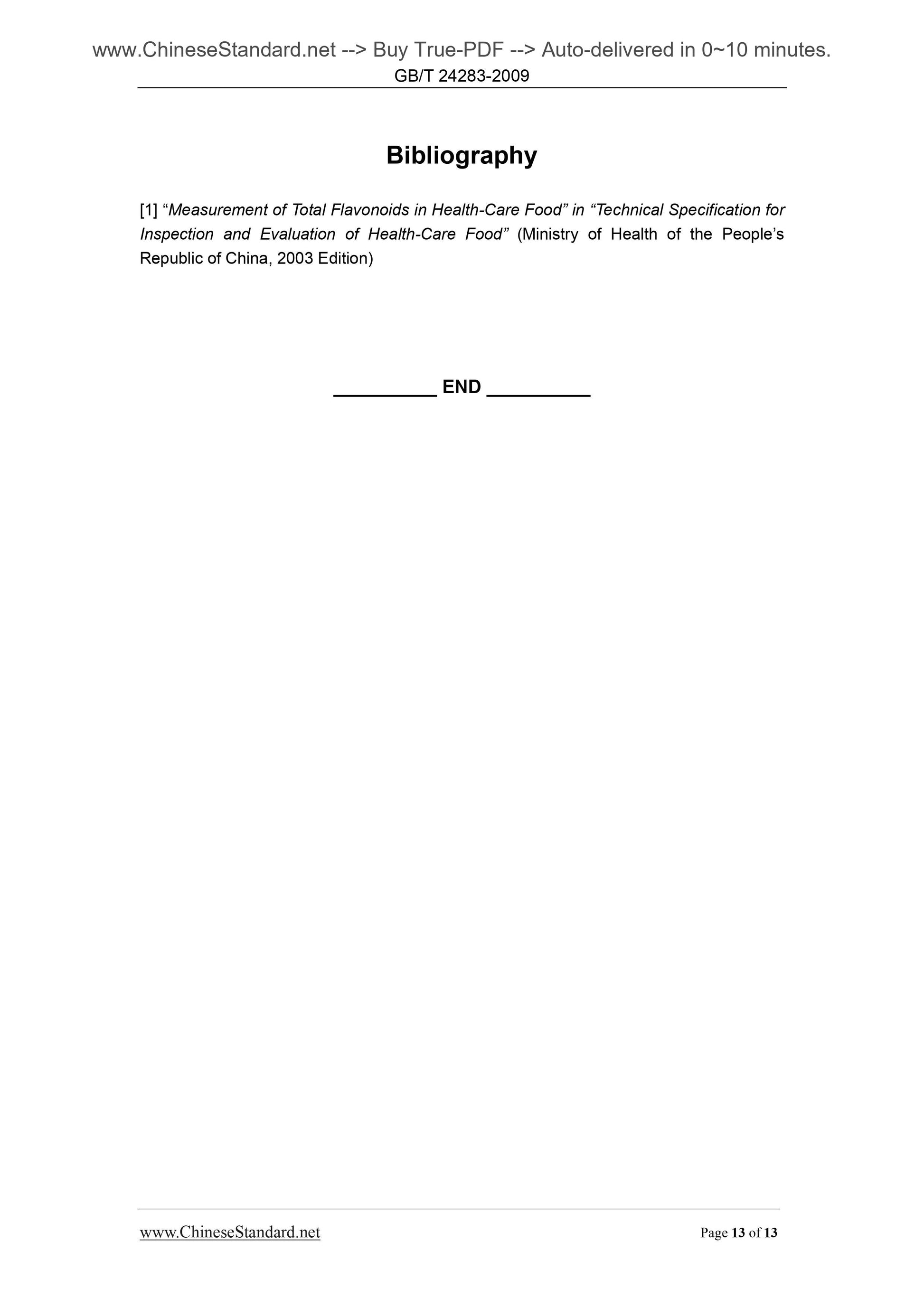1
/
of
8
www.ChineseStandard.us -- Field Test Asia Pte. Ltd.
GB/T 24283-2009 English PDF (GB/T24283-2009)
GB/T 24283-2009 English PDF (GB/T24283-2009)
Regular price
$140.00
Regular price
Sale price
$140.00
Unit price
/
per
Shipping calculated at checkout.
Couldn't load pickup availability
GB/T 24283-2009: Propolis
Delivery: 9 seconds. Download (and Email) true-PDF + Invoice.Get Quotation: Click GB/T 24283-2009 (Self-service in 1-minute)
Newer / historical versions: GB/T 24283-2009
Preview True-PDF
Scope
This Standard specifies propolis and ethanol extracted propolis’ definitions andrequirements for its quality, test method, packaging, labeling, storage and transportation.
This Standard is applicable to the process and trade of propolis and ethanol extracted
propolis.
Basic Data
| Standard ID | GB/T 24283-2009 (GB/T24283-2009) |
| Description (Translated English) | Propolis |
| Sector / Industry | National Standard (Recommended) |
| Classification of Chinese Standard | B47 |
| Classification of International Standard | 83.080.01 |
| Word Count Estimation | 10,153 |
| Date of Issue | 2009-07-08 |
| Date of Implementation | 2009-12-01 |
| Quoted Standard | GB/T 191 |
| Regulation (derived from) | PRC National Standard Approval Announcement 2009 No.9 (Total No.149) |
| Issuing agency(ies) | General Administration of Quality Supervision, Inspection and Quarantine of the People's Republic of China, Standardization Administration of the People's Republic of China |
| Summary | This standard specifies the definition and quality of propolis and propolis ethanol extract, inspection methods, packaging, signs, storage, transport requirements. This standard applies to propolis and propolis workpiece, trade. |
Share
